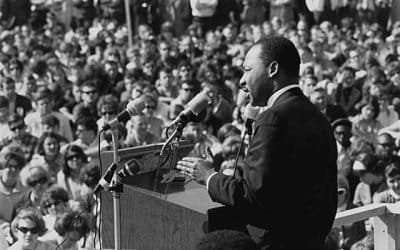Say what you want about The New York Times, but it still makes more news than any other paper in the United States. By this, I don’t mean in the sense of printing the news, as other papers do, but rather in the sense of news about the Times itself. Consider these recent items that made national news.
— A new executive editor was appointed at the Times. Veteran reporter and editor Bill Keller was named to replace Howell Raines, who was forced out in the wake of the Jayson Blair scandal. The latter was a reporter who was fired for inventing facts in his stories.
— Another reporter, Lynette Holloway, grossly screwed up a story about Steven Gottlieb, a music industry executive, in a business section story on July 7. A week later, the Times was forced to retract the whole thing.
— The Times announced the appointment of David Brooks of The Weekly Standard as a regular op-ed columnist. He becomes the first explicitly conservative columnist on the page, which has long been dominated by foaming-at-the-mouth liberals like Paul Krugman and Bob Herbert. The current token conservative, Bill Safire, is really just a moderate Republican, which still puts him well to the right of everyone else at the Times.
It’s hard to imagine any other paper in the United States generating this kind of news about its own activities. Probably only a small fraction of people who knew that Howell Raines was executive editor of the Times could even name his counterparts at The Wall Street Journal or The Washington Post. (For the curious, they are Paul Steiger and Leonard Downie Jr., respectively.)
The fact is that the Times is the 600-pound gorilla of American journalism. Despite recent setbacks, it still sets the tone for much of the rest of the media and can establish the national agenda on key issues. In recent weeks, congressional correspondent David Firestone made the nonrefundability of the child credit in the tax bill an issue in Congress by pounding the issue in the Times.
A key reason for the Times’ influence is the depth of its resources. For example, it has 15 people just on its editorial board. Most papers get by with far fewer editorial writers. The Washington Post has nine and the Wall Street Journal has only seven. In areas such as foreign reporting, only The Associated Press has more correspondents, and the Times’ business staff is exceeded only by The Wall Street Journal among newspapers.
Because of its dominant influence within the national media, the Times deserves much of the responsibility for how people view the press generally. Recent polls suggest that this view is not very positive.
A Pew Research Center poll released on July 13 found almost half of Americans saying that some elements of the press are too critical of the United States. Fifty-three percent says that the press is politically biased, and 56 percent believes that the news is often reported inaccurately. Fifty-one percent says that the media tilt toward the left, with only 26 perceiving a rightward bias. Interestingly, only 14 percent believes neither label applies. In short, the vast majority of people think that the press comes nowhere close to achieving objectivity.
A Gallup Poll in May found rising concerns about inaccurate reporting. In 1985, 55 percent of people thought that the press usually got the facts straight, with 34 percent saying that reports were often inaccurate. Now, an astonishing 62 percent says that the press is often inaccurate, with just 36 percent believing that the facts are straight.
According to a Rasmussen poll taken on July 14 and 15, the Times bears much of the blame for the widespread view that much reporting is inaccurate. Only 10 percent of people find the Times to be very reliable, with 36 percent saying it is only somewhat reliable. Compared to this 46 percent reliability rating, other news sources do far better. Sixty-six percent of people find CNN to be reliable, and 73 percent says that their local newspaper is such. Interestingly, Fox News, which is often attacked for a lack of objectivity, is considered reliable by 72 percent of Americans.
Longtime Wall Street Journal editor Robert Bartley believes that liberal ideology is behind the problem of inaccuracy. “An editor trying to put out objective reports,” he wrote in a July 28 column, “has to contend with a newsroom dominated by a single viewpoint.” That viewpoint ignores or downplays facts that contradict the liberal worldview and plays up those that support it.
Fortunately, new media — the Internet, cable news and talk radio — provide alternate sources of information and opinion for those who want it. In order to compete, old media like the Times need to strive harder to achieve fairness and balance or continue to lose the respect of the American people.




